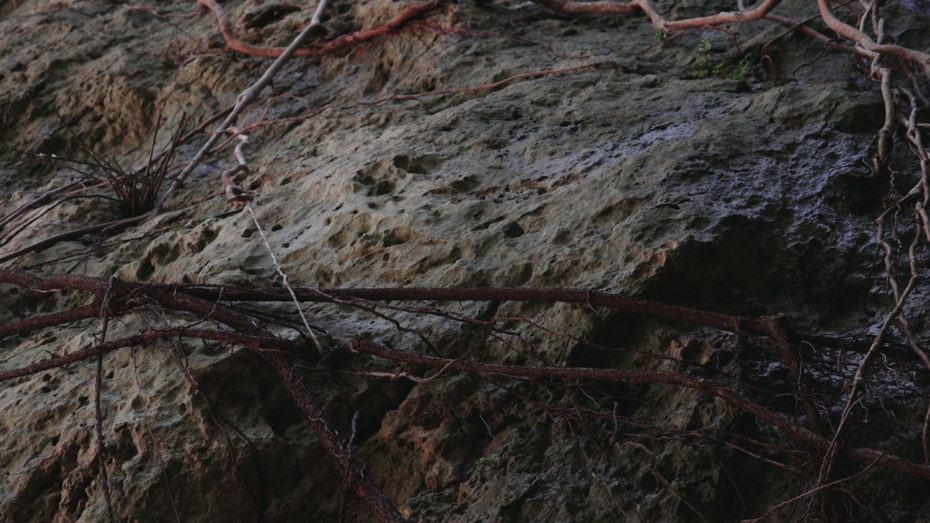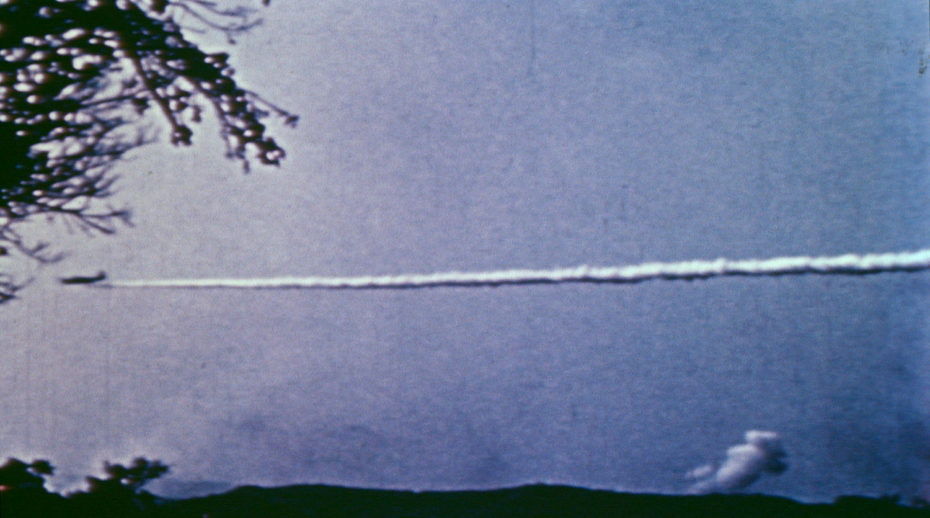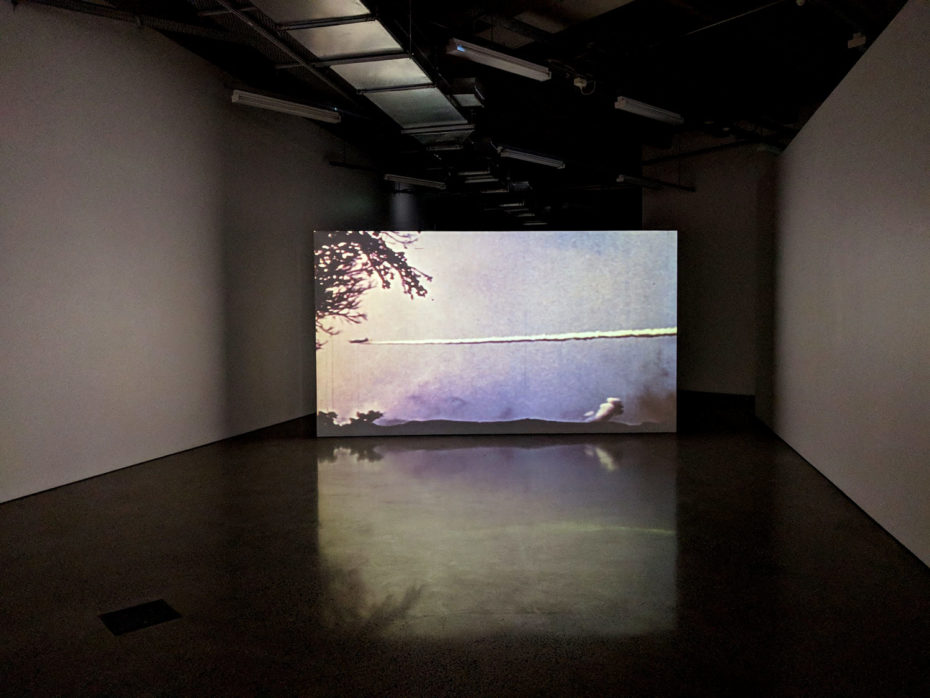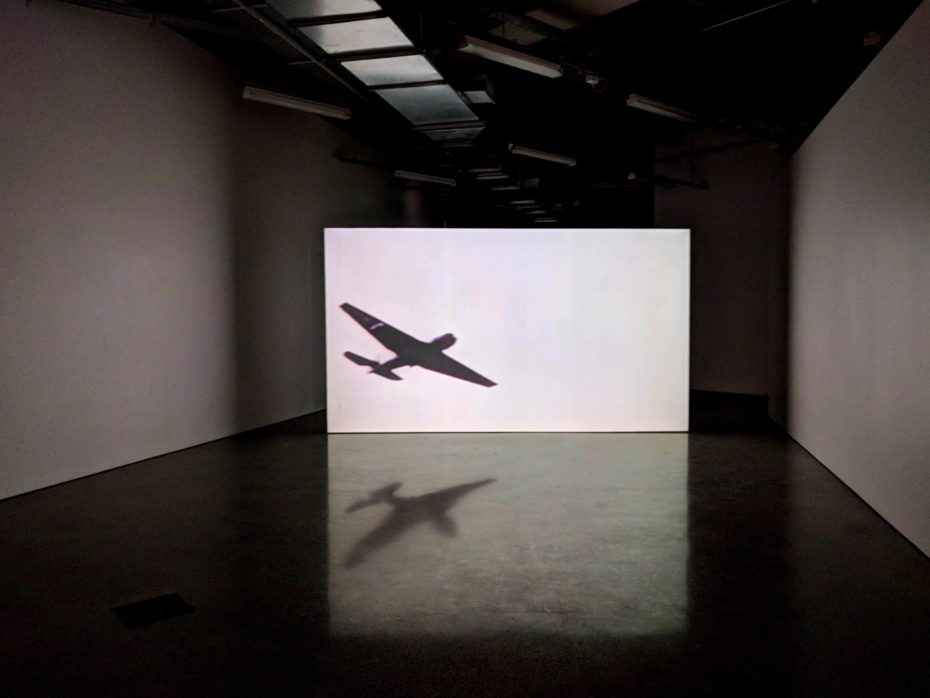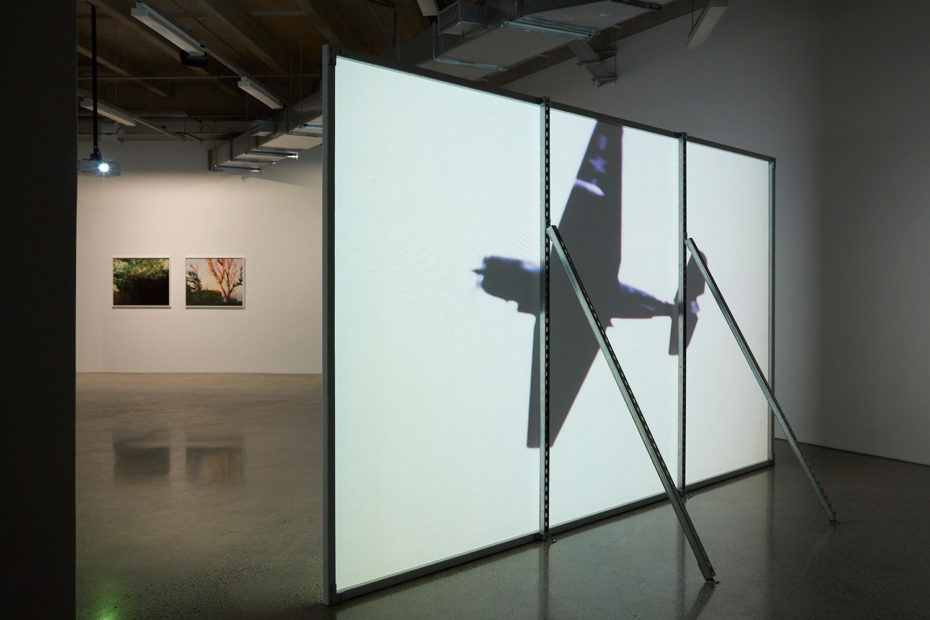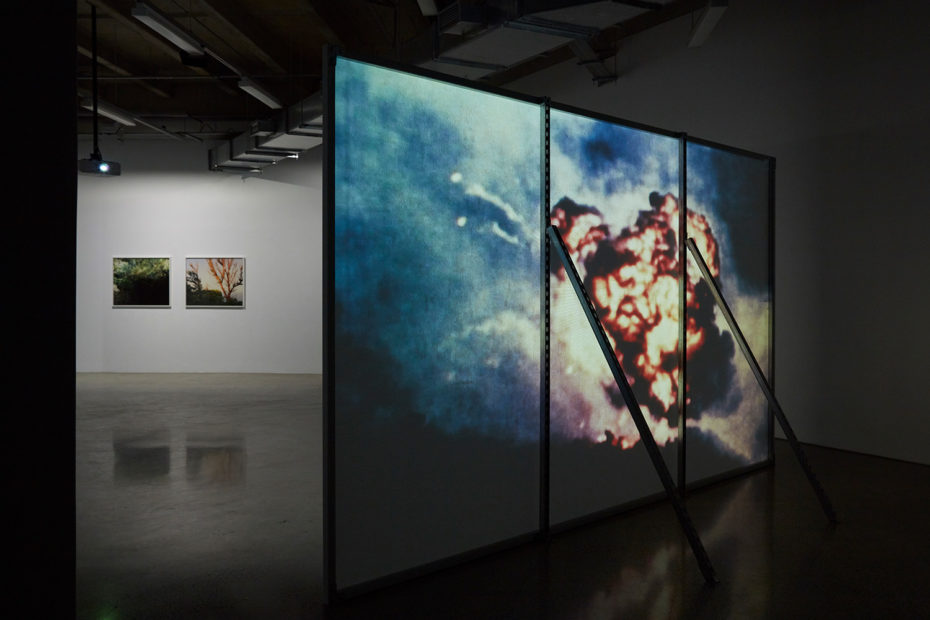It Was a Cave Like This
It Was a Cave Like This (2017-18) combines audio of Mrs Uehara, who is part of a peace activist group that tells their experiences of The Battle of Okinawa at the Peace Memorial Museum, with violent American propaganda footage filmed in Okinawa during the battle. This footage is interspersed with present-day filming of cliffs and rocks around numerous caves near the Cornerstone of Peace Memorial, which is a large government-sanctioned commemoration of this conflict. It Was a Cave Like This employs visual strategies that allow histories to be sensed beyond what is physically visible within an image.
The opening sequence consists of present day footage of lush hillside foliage and cliffs with a voiceover stating “You helped do this. You helped do the same to Okinawa”. The voice continues and explains that on these same hills is the Cornerstone of Peace memorial where all civilians and military who died in the battle, regardless of their nationality, are named. The voiceover also speaks of the caves that surround this memorial, which are not part of this official memorialisation. Following this voiceover sequence are archival images of planes dropping explosives, as well as troops-in-action as they blow up, torch and bomb various Okinawan landscapes. This imagery is accompanied by the sounds of droning planes, detonating bombs and gunfire, which are sensed in viewers’ ears as they watch, but also by the soldiers in the archival footage as they clasp their hands over their heads. Following this sequence, the screen cuts to black and a formal American voiceover narrates the achievements of various military units who have taken control of Okinawa. The artwork continues this cut to black and then focuses on Mrs Uehara’s experiences, who remains present via her voice, as opposed to her image.
The central focus of this artwork is Mrs Uehara’s story of hiding from US forces in Amanso Cave to avoid capture and bullets. Here the cave becomes the key component to not only her remembering but also the film’s exploration of how to image and connect to painful histories. Mrs Uehara’s description of hiding in the cave is extremely evocative. She speaks of its dark dampness, and also the horror of being banished by other people, who were also hiding, because her little brother’s crying created the risk of exposure for everyone. While her narration is extremely palpable, the cave remains an un-imaged part of this film; viewers must imagine what Mrs Uehara narrates.
The present-day imagery of this artwork responds to Mrs Uehara’s historical experiences by sensing her story within contemporary life, via the cliffs and hillsides that surround this conflict’s official government memorial, and in the archival footage of those same landscapes. These methods allow It Was a Cave Like This to operate from a position that embraces a different kind of knowing. Rather than simply identifying where Asia-Pacific War histories can found, this artwork focuses on how to produce a deeper connection to the presence of this history. This connection is premised in seeing images as much as it is to listening to the ways they respond to very personalised acts of sensual remembering. This means learning to listen to images, which in turn provides other ways to witness, sense and memorialise painful histories beyond the confines of knowable facts and figures, as well as official memorials and other forms of government sanctioning. As Mrs Uehara says: “thank you for listening, for your effort, for listening diligently, thank you very much. You were smiling as you were listening, thank you very much for your smiley face as you listened to me. It might have been difficult and painful to listen to my story but you listened very well, thank you”.
Series Information
- Year: 2018
- Dimension: Variable
- Medium: Single Channel HD Video
